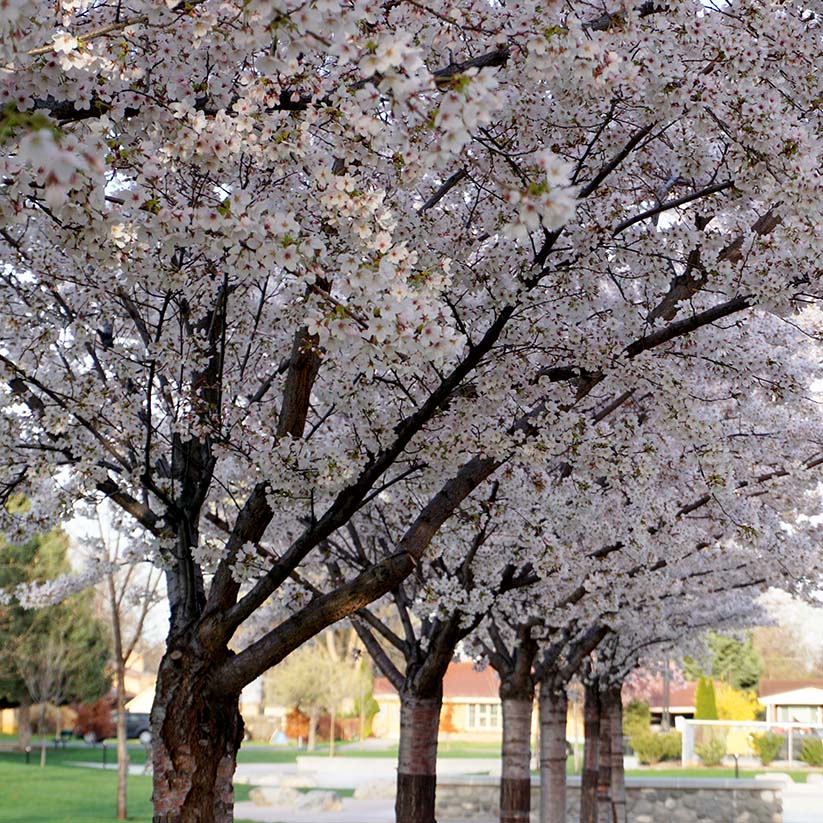Landscape Trees
 Springville has a few interesting situations that may make choosing trees for general landscaping a challenge. These challenges are soil pH (soil alkalinity), ground water level, soil type (heavy clay or loamy clay), and compaction. If you live along the foothills or on the east side of town, there are much fewer issues to contend with. If you live in the southwest area of town, you will need to deal with high pH and heavy clay soils.
Springville has a few interesting situations that may make choosing trees for general landscaping a challenge. These challenges are soil pH (soil alkalinity), ground water level, soil type (heavy clay or loamy clay), and compaction. If you live along the foothills or on the east side of town, there are much fewer issues to contend with. If you live in the southwest area of town, you will need to deal with high pH and heavy clay soils.
The tree species on the following lists have number designations. The designation numbers refer to the following:
1 Designation
Tree species that should only be planted east of 400 West, north of 900 South,
and south of 600 North. These areas have fewer soil issues.
2 Designation
Trees that can be planted in all areas with a “1” designation, south of 900 south
to Highway 51, and west of 400 West if you are north of 400 South.
3 Designation
Trees that can be planted in all areas of Springville as long as you are not south of Dry Creek in the area west of Highway 51.
4 Designation
Trees that should do well in any location in Springville.
5 Designation
Trees that should not be planted in areas with high ground water.
6 Designation
Trees that may be more difficult to find in most nurseries, but they are worth looking for.
Large Trees
Large trees are trees that will reach a mature height of at least 40 feet or higher. The mature spread of a large tree can vary; however, most large trees have a spread of a minimum of 25 feet. Some species of trees have many cultivars. Only the species will be listed.
All of the trees listed below have at least one specimen growing in one of Springville’s parks, public spaces, or as street trees.
Medium Size Trees
Medium size trees should reach a mature height between 25 to 40 feet. The spread of a medium size tree is usually less than 30 feet.
Small Trees
Small trees are trees that generally do not grow to be more than 25 feet tall. Small trees generally have a spread of less than 20 feet. Most small trees are slower growing and can be shorter lived.